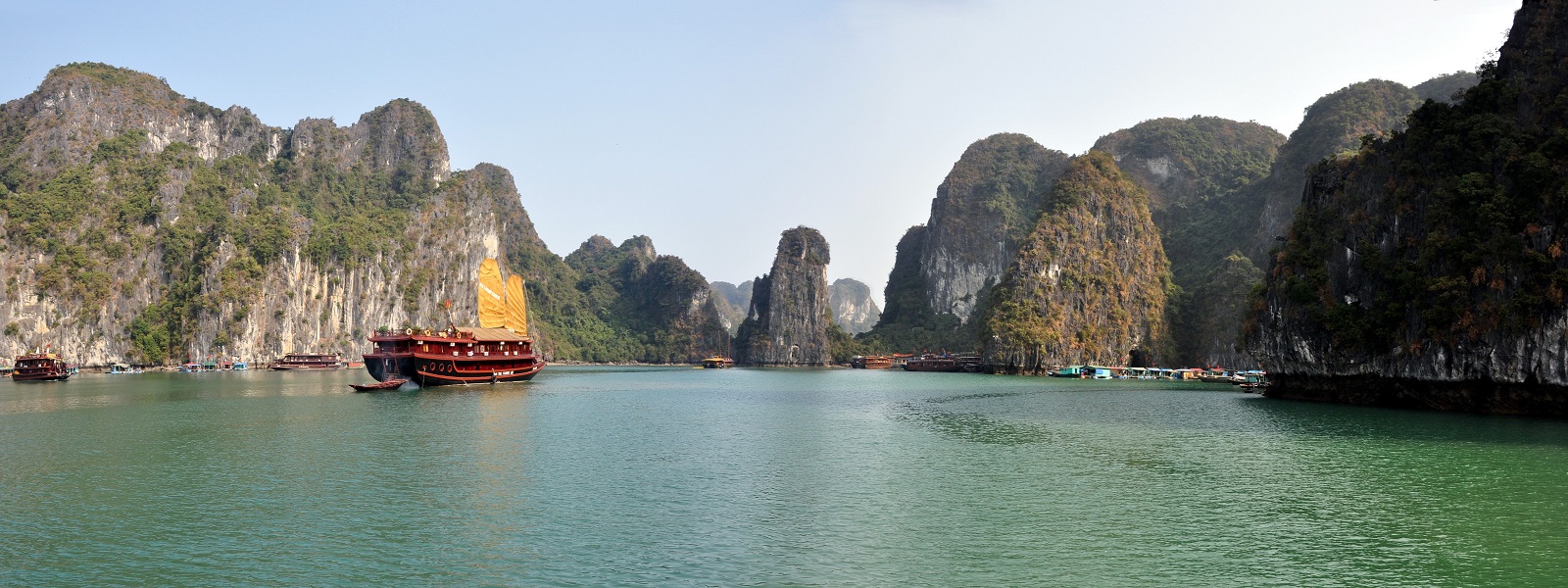Travel tips
Vietnam
BEACHES, MOUNTAINS, CULTURE: VIETNAM HAS IT ALL

Within this basic pattern there are marked differences according to altitude and latitude; temperatures in the south remain equable all year round, while the north experiences distinct seasonal variations.
In southern Vietnam the dry season lasts from December to late April or May, and the rains from May through to November. Since most rain falls in brief afternoon downpours, this need not be off-putting, though flooding at this time of year can cause problems in the Mekong Delta. Daytime temperatures in the region rarely drop below 20°C, occasionally hitting 40°C during the hottest months (March, April and May). The climate of the central highlands generally follows the same pattern, though temperatures are cooler, especially at night. Again, the monsoon rains of May to October can make transport more complicated, sometimes washing out roads and cutting off remoter villages.
Along the central coast the rainfall pattern reverses under the influence of the northeast monsoon. Around Nha Trang the wet season starts with a flourish in November and continues through December. Further north, around Hue and Da Nang, the rains last a bit longer, from September to February, so it pays to visit these two cities in the spring (Feb–May). Temperatures reach their maximum (often in the upper 30°C) from June to August, when it’s pleasant to escape into the hills. The northern stretches of this coastal region experience a more extreme climate, with a shorter rainy season (peaking in September and October) and a hot dry summer. The coast of central Vietnam is the zone most likely to be hit by typhoons, bringing torrential rain and hurricane-force winds. Though notoriously difficult to predict, in general the typhoon season lasts from August to November.
Northern Vietnam is generally warm and sunny from October to December, after which cold winter weather sets in, accompanied by fine persistent mists which can last for several days. Temperatures begin to rise again in March, building to summer maximums that occasionally reach 40°C between May and August, though average temperatures in Hanoi hover around a more reasonable 30°C. However, summer is also the rainy season, when heavy downpours render the low-lying delta area almost unbearably hot and sticky, and flooding is a regular hazard. The northern mountains share the same basic climate, though temperatures are considerably cooler and higher regions see ground frosts, or even a rare snowfall, during the winter (Dec–Feb).
With such a complicated weather picture, there’s no one particular season to recommend as the best time for visiting Vietnam. Overall, autumn (Sept–Dec) and spring (March and April) are probably the most favorable seasons if you’re covering the whole country.

View more
We saw, learned, heard, tasted a lot and really got to know these 2 countries better. Thanks a lot for organizing our tour.
Mr Denis
My husband and I are now home and we'd like to thank you for an extraordinary trip in Vietnam and Cambodia. Thu, you did a terrific job in planning it and all details were perfect and everything happened like clockwork. We loved...
Fran O’Connell
We just got back. I can't begin to tell you how wonderful it was. We loved every place we stayed. You're a gem. As to the countries themselves: I was totally thrilled, fascinated, absorbed. Hope to do another trip to the...
Loraine F. Gardner
I wanted to specifically tell you how wonderful my tour guide Tien from Hue was. We were lucky enough to have him for Hue, Danang and Hoi An. He was sweet, caring, knowledgeable, dedicated and passionate about his country. I felt...
Dr. Halli Zung